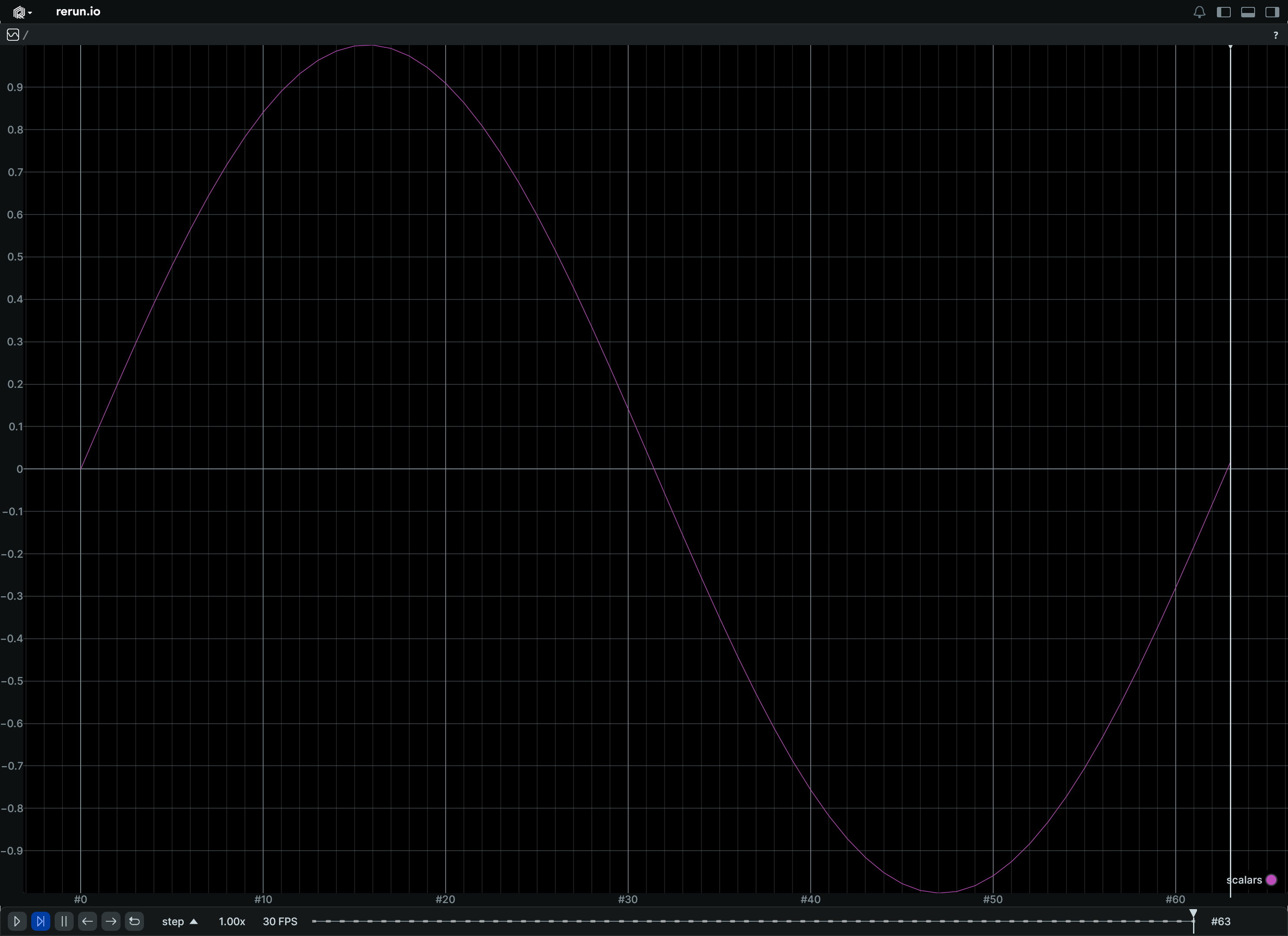Archetype: A double-precision scalar, e.g. More...
#include <rerun/archetypes/scalar.hpp>
Public Types | |
| using | IndicatorComponent = rerun::components::IndicatorComponent< IndicatorComponentName > |
| Indicator component, used to identify the archetype when converting to a list of components. | |
Public Member Functions | |
| Scalar (Scalar &&other)=default | |
| Scalar (const Scalar &other)=default | |
| Scalar & | operator= (const Scalar &other)=default |
| Scalar & | operator= (Scalar &&other)=default |
| Scalar (rerun::components::Scalar _scalar) | |
| Scalar | with_scalar (const rerun::components::Scalar &_scalar) && |
| The scalar value to log. | |
| Scalar | with_many_scalar (const Collection< rerun::components::Scalar > &_scalar) && |
This method makes it possible to pack multiple scalar in a single component batch. | |
| Collection< ComponentColumn > | columns (const Collection< uint32_t > &lengths_) |
| Partitions the component data into multiple sub-batches. | |
| Collection< ComponentColumn > | columns () |
| Partitions the component data into unit-length sub-batches. | |
Static Public Member Functions | |
| static Scalar | update_fields () |
Update only some specific fields of a Scalar. | |
| static Scalar | clear_fields () |
Clear all the fields of a Scalar. | |
Public Attributes | |
| std::optional< ComponentBatch > | scalar |
| The scalar value to log. | |
Static Public Attributes | |
| static constexpr const char | IndicatorComponentName [] = "rerun.components.ScalarIndicator" |
| static constexpr const char | ArchetypeName [] = "rerun.archetypes.Scalar" |
The name of the archetype as used in ComponentDescriptors. | |
| static constexpr auto | Descriptor_scalar |
ComponentDescriptor for the scalar field. | |
Detailed Description
Archetype: A double-precision scalar, e.g.
for use for time-series plots.
The current timeline value will be used for the time/X-axis, hence scalars should not be static.
When used to produce a plot, this archetype is used to provide the data that is referenced by archetypes::SeriesLines or archetypes::SeriesPoints. You can do this by logging both archetypes to the same path, or alternatively configuring the plot-specific archetypes through the blueprint.
Examples
Update a scalar over time

Update a scalar over time, in a single operation

⚠ Deprecated since 0.23.0: Use Scalars instead.
Member Function Documentation
◆ with_many_scalar()
|
inline |
This method makes it possible to pack multiple scalar in a single component batch.
This only makes sense when used in conjunction with columns. with_scalar should be used when logging a single row's worth of data.
◆ columns() [1/2]
| Collection< ComponentColumn > rerun::archetypes::Scalar::columns | ( | const Collection< uint32_t > & | lengths_ | ) |
Partitions the component data into multiple sub-batches.
Specifically, this transforms the existing ComponentBatch data into ComponentColumns instead, via ComponentBatch::partitioned.
This makes it possible to use RecordingStream::send_columns to send columnar data directly into Rerun.
The specified lengths must sum to the total length of the component batch.
◆ columns() [2/2]
| Collection< ComponentColumn > rerun::archetypes::Scalar::columns | ( | ) |
Partitions the component data into unit-length sub-batches.
This is semantically similar to calling columns with std::vector<uint32_t>(n, 1), where n is automatically guessed.
Member Data Documentation
◆ Descriptor_scalar
|
staticconstexpr |
ComponentDescriptor for the scalar field.
The documentation for this struct was generated from the following file:
- rerun/archetypes/scalar.hpp